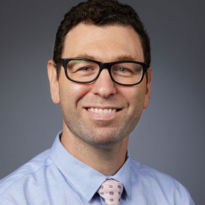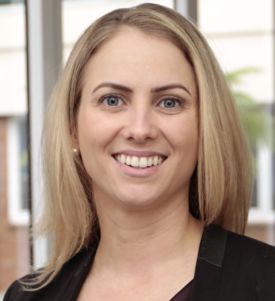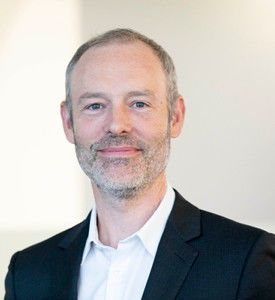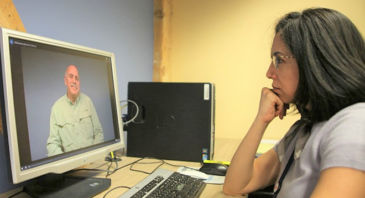Recorded: May 20, 2020
Since the start of the modern simulation era, many in the healthcare simulation community have taken a “Field of Dreams” approach to our simulation efforts, believing, like the character Ray Kinsella in the movie of the same name, that “If we build it, they will come.” Often, however, “buy-in” to simulation programs is just as difficult as getting real people to come to a baseball diamond in the middle of an Iowa cornfield. Simulation increasingly competes with a variety of other healthcare education, quality, and safety efforts for resources.
Rather than creating simulation programs hoping colleagues and trainees will “buy-in”, instead we need to solve real clinical problems, using goals co-created with the colleagues we aim to serve.
In this session, we turned our attention to making an impact with your simulation program. The approach involves two major shifts:
- Focusing on other people’s “frames” regarding your simulation program rather than your own; and
- Finding ways to help them solve the problems, reach the goals, or do their jobs with your simulation efforts, rather than focusing on education alone.
This approach blends two concepts: Translational simulation and customer-oriented innovation.
Translational simulation focuses on identifying and addressing high yield problems at the “coal face” of clinical care. The focus is on simulation interventions that stretch outcomes beyond clinical and teamwork skills to improving such things as clinical benchmarks, clinical outcomes, organizational culture, and the patient journey.
Customer-centered innovation concentrates on identifying, at a granular level, the problems and pain points, the jobs-to-be-done, and the gains or rewards of the people we aim to serve. This is a shift for many simulation educators and managers because the “customer” is not always the participants in the simulation; rather it is often the funder or leader or manager who makes the program possible. Identifying “what is in it for them” helps us design and position our simulation efforts in a way that attracts resources and buy-in. It also allows us to design our program for maximum impact because we discover and address the outcomes other people in our organization really care about.
Learning Objectives:
Following this webinar, participants will be able to:
- Identify opportunities to use simulation for positive organizational change
- Describe ways to get support for simulation-based system testing or training for quality, safety or education initiatives
Host

Demian Szyld, MD, EdM
Senior Director, Faculty Development Program
Center for Medical Simulation, Boston, Massachusetts
Dr. Szyld is an Emergency Medicine physician at the Brigham and Women’s Hospital (BWH) and a Lecturer at Harvard Medical School. Dr. Szyld was the first Simulation and Education Fellow at the STRATUS Simulation Center at BWH and is actively involved in the Society for Simulation in Healthcare and has chaired the Formal Training Affinity Group, led the Affiliations Committee and served as an Accreditation Site Reviewer and completed a term on the Board of Directors (2016-2019).
Panel Moderator

Jenny Rudolph, PhD
Executive Director
Center for Medical Simulation, Boston, Massachusetts
Dr. Rudolph is an organization behavior scholar who has helped health educators world-wide promote dynamic, honest, but non-threatening conversations through the “debriefing with good judgment” approach to reflective conversations. Dr. Rudolph is a life-long athlete who brings the joy of practice to learning in healthcare education, especially feedback, debriefing, and collaboration at point of care.
Panelists
Donna Bonney, MN
Executive Director
Mater Education, Queensland, Australia
Donna leads a diverse team of multidisciplinary education professionals and is responsible for Mater’s teaching and learning strategy and operations, as well as the design, development and delivery of communication and cultural development programs, leadership and management training, clinical education and practice development and simulation programs at Mater and beyond. She is also responsible for leading Mater Education’s commercial education operations, delivering numerous health-related qualifications and short courses through Mater’s Registered Training Organisation, and health education programs direct to the community.

Stephanie Barwick, MN
Head of Partnerships, Programs and Innovation
Mater Education, Queensland, Australia
Stephanie is taking the benefits of simulation training beyond direct healthcare delivery; applying the innovative practices and across the whole organisation. As a registered nurse and midwife, Stephanie loves combining her passion for simulation with her critical care nursing experience. She has successfully implemented a number of organisational-wide in-situ simulation initiatives, identifying significant threats to patient safety and experience.

Marjorie Lee White, MD, MA, MPPM
Director of the Office of Interprofessional Simulation
Assistant Dean for Clinical Simulation in the School of Medicine
Vice President of Clinical Simulation in the UAB Health System
The University of Alabama at Birmingham, Birmingham, Alabama
Dr. Marjorie Lee White is a Professor in the School of Medicine, Departments of Pediatrics and Medical Education and in the School of Health Professions, Department of Health Services Administration. She is board certified in Pediatrics, Pediatric Critical Care and Pediatric Emergency Medicine and practices Pediatric Emergency Medicine at Children’s of Alabama. She is currently Vice President for Clinical Simulation, UAB Medicine and Assistant Dean for Clinical Simulation, UAB School of Medicine and Director of the Office of Interprofessional Simulation for Innovative Clinical Practice (OIPS).

Chris Roussin, PhD
Senior Director, Education Leadership and International Programs
Center for Medical Simulation, Boston, Massachusetts
Dr. Roussin is an innovator in simulation program and faculty development, devising new ways to use simulation to build relationships, quality, safety and meaning in healthcare work. He has significant experience creating strong partnerships in complex healthcare organizations to build sustainable and culture-changing programs based in experiential learning and positive communication, collaboration and feedback approaches.


